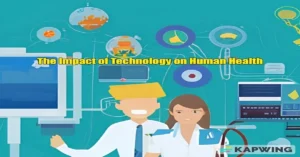In the hustle and bustle of our daily lives, our eyes bear the brunt of constant screen time and ever-increasing demands on our vision. One condition that silently affects millions across the globe is myopia, a vision impairment that’s more than meets the eye. This comprehensive guide aims to shed light on myopia, exploring its nuances, causes, and symptoms while empowering you with practical strategies to manage and prevent its progression.
Table of Contents:
Understanding Myopia
1.1 What is Myopia?
1.2 Causes of Myopia
1.3 Myopia SymptomsThe Myopia Epidemic
2.1 Global Prevalence
2.2 Myopia and Modern Lifestyles
2.3 Impact on Daily LifeMyopia in Different Age Groups
3.1 Childhood Myopia
3.2 Teenage Myopia
3.3 Adult-Onset MyopiaMyopia Progression and Risks
4.1 Factors Influencing Myopia Progression
4.2 Risks Associated with High MyopiaAddressing Myopia: Treatment and Management
5.1 Prescription Glasses and Contact Lenses
5.2 Orthokeratology (Ortho-K)
5.3 Atropine Eye Drops
5.4 Lifestyle Changes for Myopia ControlMyopia Prevention Strategies
6.1 Outdoor Activities and Sunlight Exposure
6.2 The 20-20-20 Rule
6.3 Balanced Nutrition for Eye HealthFrequently Asked Questions (FAQs)
Understanding Myopia
1.1 What is Myopia?
Myopia, commonly known as nearsightedness, is a refractive error that causes distant objects to appear blurry while close objects can be seen clearly. This occurs when the eyeball is too long or the cornea has too much curvature.
1.2 Causes of Myopia
While genetics play a significant role in myopia, environmental factors such as prolonged near work, lack of outdoor activities, and excessive screen time also contribute to its development.
1.3 Myopia Symptoms
Symptoms of myopia include squinting, headaches, and difficulty seeing objects at a distance. Regular eye exams are crucial for early detection and management.
The Myopia Epidemic
2.1 Global Prevalence
Myopia is reaching epidemic proportions globally, affecting around 30% of the world’s population. Asian countries, in particular, report higher prevalence rates.
2.2 Myopia and Modern Lifestyles
The rise of myopia is linked to modern lifestyles that involve prolonged screen time, reduced outdoor activities, and increased academic pressures.
2.3 Impact on Daily Life
Myopia can impact various aspects of daily life, from hindered academic performance to limitations in activities like driving and sports.
Myopia in Different Age Groups
3.1 Childhood Myopia
Early onset of myopia in children is becoming more common, necessitating proactive measures to prevent its progression.
3.2 Teenage Myopia
Teenagers often experience a rapid progression of myopia, emphasizing the need for regular eye check-ups and lifestyle adjustments.
3.3 Adult-Onset Myopia
Adults can develop myopia later in life, and it is essential to monitor changes in vision and seek timely intervention.
Myopia Progression and Risks
4.1 Factors Influencing Myopia Progression
Genetics, prolonged near work, and lack of outdoor activities are key factors influencing the progression of myopia.
4.2 Risks Associated with High Myopia
High myopia increases the risk of eye diseases such as retinal detachment, glaucoma, and cataracts, highlighting the importance of myopia control.
Addressing Myopia: Treatment and Management
5.1 Prescription Glasses and Contact Lenses
Corrective lenses help in providing clear vision, but they do not address the underlying causes of myopia.
5.2 Orthokeratology (Ortho-K)
Ortho-K lenses reshape the cornea overnight, providing temporary freedom from glasses or contacts during the day.
5.3 Atropine Eye Drops
Low-dose atropine eye drops have shown promise in slowing down myopia progression, especially in children.
5.4 Lifestyle Changes for Myopia Control
Encouraging outdoor activities, implementing the 20-20-20 rule, and maintaining a balanced diet contribute to effective myopia control.
Myopia Prevention Strategies
6.1 Outdoor Activities and Sunlight Exposure
Spending more time outdoors, particularly in natural light, has been linked to a lower risk of myopia development.
6.2 The 20-20-20 Rule
Taking breaks from prolonged near work every 20 minutes by looking at an object 20 feet away for at least 20 seconds helps reduce eye strain.
6.3 Balanced Nutrition for Eye Health
A diet rich in vitamins A, C, and E, as well as zinc and omega-3 fatty acids, supports overall eye health.
Conclusion
In conclusion, understanding myopia is the first step towards preserving your vision for a lifetime. By incorporating the right lifestyle changes, seeking timely eye care, and staying informed, you can take control of myopia and enjoy clear, unstrained vision.
Feel free to explore the various sections of this guide to gain a deeper insight into myopia and empower yourself with the knowledge to safeguard your eye health. If you have any unanswered questions or concerns, our FAQs section is here to provide clarity.
Remember, your eyesight is precious, and with the right information, you can embark on a journey towards healthier vision and a brighter future.
Frequently Asked Questions (FAQs)
1. Can Myopia Be Cured?
While there is no cure for myopia, various methods can help manage and control its progression.
2. Is Genetics a Significant Factor in Myopia?
Genetics play a crucial role in myopia, but environmental factors also contribute significantly.
3. How Often Should I Get My Eyes Checked?
Regular eye check-ups are essential, especially for children and teenagers, to detect and manage myopia early on.




